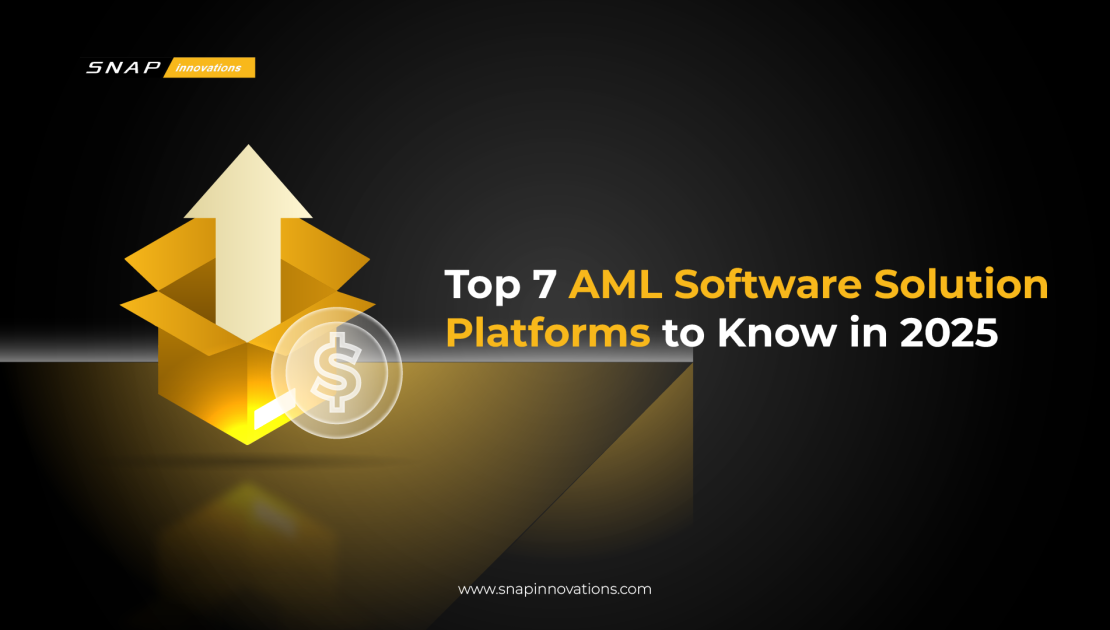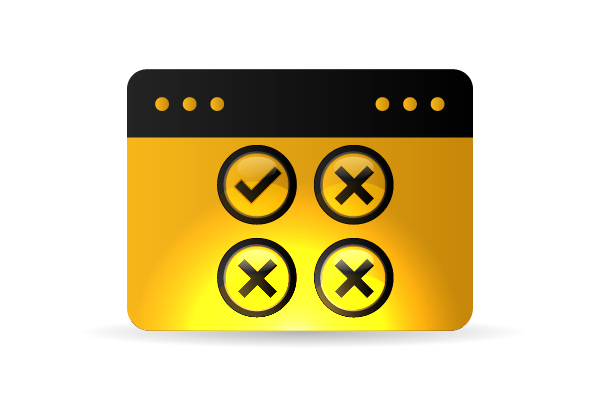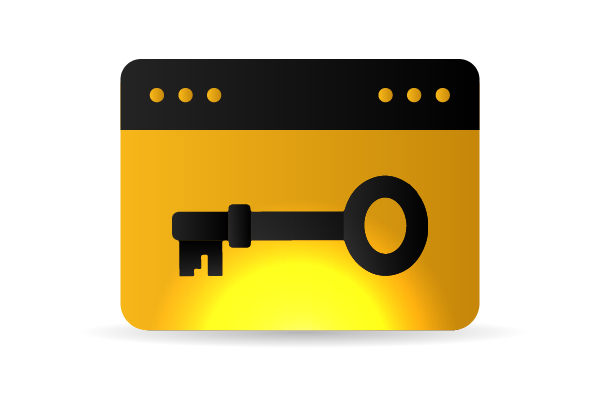Top 7 AML Software Solution Platforms to Know in 2025

In today’s increasingly regulated and interconnected global financial landscape, the fight against financial crime is no longer a peripheral activity but a core responsibility for financial institutions, fintechs, and digital asset platforms. As criminal enterprises become more technologically sophisticated, compliance frameworks must evolve just as quickly—and at the heart of these frameworks lies Anti-Money Laundering (AML) software. These tools serve as the digital shield against illicit transactions, fraud, and terrorist financing.
The urgency for effective AML solutions has never been greater. Regulatory bodies are tightening rules, introducing new compliance standards, and levying heavy fines for non-compliance. This has made AML software indispensable in helping businesses remain aligned with compliance requirements. In 2025, advancements in AI, machine learning, and automation have propelled the capabilities of these tools to new heights, offering real-time transaction monitoring, enhanced risk scoring, and agile investigative workflows.
What is AML Software?
AML software refers to specialized technological solutions designed to detect, prevent, and report financial crimes. These crimes include money laundering, terrorist financing, and other illicit financial activities. The software automates critical compliance processes such as Know Your Customer (KYC), Customer Due Diligence (CDD), transaction monitoring, and sanctions screening. By doing so, it empowers financial institutions to identify suspicious activities efficiently and take prompt action.
These platforms have evolved significantly over the past decade, increasingly incorporating cutting-edge technologies such as artificial intelligence (AI), machine learning (ML), and natural language processing (NLP). This allows them to recognize unusual transaction patterns, flag high-risk customers, and adapt dynamically to emerging threats. AML software is not just a regulatory necessity; it’s a crucial business enabler that reduces reputational risk and ensures trust in the financial ecosystem.
7 Leading AML Software Solutions
 Below is a mini-description followed by an overview (at least two paragraphs each) of some of the most prominent AML software solutions in the market:
Below is a mini-description followed by an overview (at least two paragraphs each) of some of the most prominent AML software solutions in the market:
1. SAS
SAS’s AML platform is among the most mature and comprehensive offerings in the industry. With a strong legacy in analytics, SAS enables financial institutions to deploy predictive modeling, behavior detection, and real-time alert generation. Its low false positive rate and intelligent alert management capabilities are particularly appreciated by compliance teams seeking efficiency without compromising thoroughness.
The strength of SAS lies in its advanced risk scoring and forecasting engine. Financial institutions benefit from the ability to prioritize investigations by severity and focus on alerts with the highest risk profile. The platform integrates seamlessly with existing legacy systems, making it ideal for large banks and multinational institutions with complex operational environments.
2. Flagright
Flagright is an API-first AML and fraud prevention platform built with fintechs and digital-first companies in mind. It supports rapid implementation through no-code tools and modular architecture. Users can easily plug in transaction monitoring, customer risk scoring, and case management without long development cycles.
What sets Flagright apart is its real-time data processing and continuous rule engine updates. This ensures that compliance teams always operate on the latest intelligence. With its cloud-native infrastructure, Flagright is highly scalable and can grow alongside fast-moving startups or mid-sized companies looking to expand.
3. NICE Actimize
NICE Actimize is a leader in providing enterprise-level AML solutions trusted by some of the world’s largest banks. Known for its scalability, robust transaction monitoring, and real-time alerting system, NICE Actimize supports both on-premise and hybrid deployments to suit complex IT environments.
The software combines machine learning with traditional rule-based monitoring to enhance accuracy and detection speed. It excels in identifying hidden patterns of illicit behavior, thanks to its comprehensive data ingestion and normalization capabilities. Additionally, its case management tools are customizable, making it easier for compliance teams to manage large volumes of alerts efficiently.
4. Sanction Scanner
Sanction Scanner is designed for agility and accessibility, catering mainly to small and mid-sized institutions. It offers automated screening against a wide range of sanctions lists, politically exposed persons (PEPs), and adverse media databases. With daily data updates, it ensures institutions are always aligned with the latest regulatory standards.
Its cloud-based infrastructure allows for instant deployment and seamless API integration. Users benefit from an intuitive dashboard that simplifies workflows, making compliance processes less time-consuming and more manageable. Flexible pricing and scalability options make Sanction Scanner an excellent fit for growing businesses.
5. RelyComply
RelyComply stands out with its strong focus on AI-driven monitoring and intelligent alert generation. Its case management interface is clean and user-friendly, allowing compliance officers to move quickly through investigations. The platform’s predictive analytics are key to reducing false positives and increasing detection of novel laundering schemes.
By enriching data and customizing rule engines, RelyComply helps organizations adapt to fast-changing regulatory environments. Whether it’s a small neobank or a licensed crypto exchange, RelyComply offers the agility and intelligence required to keep financial crime at bay while maintaining a smooth customer experience.
6. ComplyCube
ComplyCube provides a complete suite of KYC and AML tools with a focus on identity verification, customer screening, and transaction monitoring. Tailored for fintechs, crypto exchanges, and regulated digital platforms, ComplyCube offers real-time sanctions and PEP screening via an API or dashboard interface.
Its global data coverage includes thousands of watchlists and media sources, ensuring robust regulatory alignment. The platform supports biometric verification, document scanning, and video KYC for seamless onboarding. ComplyCube is especially valued for its modular architecture, which lets businesses adopt only the features they need and scale as compliance requirements grow.
7. FinScan
FinScan is a veteran player in the AML space, known for its robust data quality management and screening precision. It specializes in watchlist screening and identity resolution, helping financial institutions maintain clean and accurate customer records.
What differentiates FinScan is its advanced matching algorithms that minimize false positives while ensuring critical risks are not missed. It integrates smoothly with core banking and CRM systems and is used by institutions that require high compliance assurance across multiple jurisdictions. FinScan’s multilingual and cross-jurisdictional support makes it suitable for multinational banks and financial service providers.
Key Capabilities Across Top AML Solutions
The top AML software solutions in 2025 share several critical capabilities that distinguish them in a rapidly evolving compliance environment. These features are not only necessary for effective AML defenses but also serve as key differentiators for organizations choosing between vendors.
Firstly, AI-driven transaction monitoring and intelligent risk scoring are now foundational. These features allow institutions to analyze large volumes of data in real-time, identify suspicious patterns, and assign risk levels dynamically. Platforms like SAS and RelyComply use anomaly detection to catch both known and novel threats. Others, such as Flagright and ComplyCube, excel in real-time rule execution and customer profiling.
Secondly, watchlist, sanctions, and adverse media screening remain pivotal. Vendors like NICE Actimize, Sanction Scanner, and FinScan ensure access to continuously updated global databases that include sanctions, PEPs, and criminal records. This breadth and depth of data are essential for preventing regulatory blind spots.
Additional key features include:
- Scalability & Deployment Flexibility:
- Cloud-native options (e.g., Flagright, Sanction Scanner, ComplyCube) offer fast implementation and adaptability.
- On-premise/hybrid solutions (e.g., NICE Actimize, SAS) offer deeper integration for large enterprises.
- False Positive Reduction:
- Machine learning tuning (e.g., RelyComply, FinScan) improves precision in alerts.
- Predictive modeling (SAS) enhances forward-looking compliance.
- Continuous Monitoring:
- Platforms like Flagright and Sanction Scanner provide real-time updates to sanction lists and risk alerts.
- Global Regulatory Coverage:
- Tools comply with FATF, BSA, AMLD6, and local frameworks.
- Automated reporting and audit trails (e.g., NICE Actimize, ComplyCube) support regulatory submissions.
AML Software Comparison Table
 The following table summarizes key attributes of each AML software, providing a side-by-side view to support informed decision-making:
The following table summarizes key attributes of each AML software, providing a side-by-side view to support informed decision-making:
| Vendor | Strengths | Deployment/Form | Ideal For |
| SAS | Predictive analytics, low false positives | Enterprise-grade | Large banks with high volume |
| Flagright | API-first, real-time tools, fast setup | Cloud-native | Fintechs, digital startups |
| NICE Actimize | Scalable, hybrid architecture, real-time alerts | On-premise or hybrid | Global banks, large FIs |
| Sanction Scanner | Agile watchlist screening, flexible pricing | Cloud-based | SMEs, mid-tier institutions |
| RelyComply | AI analytics, smart alerting, intuitive UI | SaaS | Digital banks, regulated platforms |
| ComplyCube | Identity + AML suite, modular tools | Cloud/API/Dashboard | Fintechs, crypto, digital onboarding |
| FinScan | Advanced screening precision, multilingual | Enterprise & hybrid | Multinational FIs, compliance-heavy orgs |
These differences help organizations choose based on their size, deployment preferences, and regulatory needs. From cloud agility to enterprise integration, each software offers a unique blend of capabilities.
How to Choose the Right AML Software
 Choosing the right AML software requires a strategic assessment of business needs, operational environment, and compliance exposure. A one-size-fits-all approach doesn’t work when regulatory mandates, risk profiles, and customer behaviors vary widely.
Choosing the right AML software requires a strategic assessment of business needs, operational environment, and compliance exposure. A one-size-fits-all approach doesn’t work when regulatory mandates, risk profiles, and customer behaviors vary widely.
Firstly, institutions must determine whether they need a cloud-native, quickly deployable solution or an enterprise-grade system that integrates across legacy infrastructure. For example, fintechs may prefer agile platforms like Flagright or ComplyCube, while traditional banks might lean toward SAS or NICE Actimize for their deep-rooted analytical engines.
Secondly, data quality and false-positive rates are major concerns. Organizations with lean compliance teams should prioritize platforms that offer AI-enhanced precision and pre-built workflows—such as RelyComply or FinScan. Real-time risk insights are critical in fast-paced environments, making tools with continuous monitoring and smart alerting essential.
Don’t overlook these factors:
- Regulatory Alignment: Confirm that databases, alerts, and audit trails meet jurisdictional needs.
- Scalability: Opt for solutions that can grow with your organization.
- Integration: Choose software with API-first architecture or existing CRM/KYC compatibility.
- Support: Evaluate vendor onboarding, training, and technical support.
Conclusion
As money laundering tactics become more nuanced and regulatory expectations more stringent, the role of AML software is no longer optional. It is the cornerstone of a modern compliance infrastructure. Whether your organization is a fast-growing fintech or a multinational bank, the AML tools you deploy in 2025 will define your ability to detect and deter financial crime.
Each of the seven AML software solutions covered here—SAS, Flagright, NICE Actimize, Sanction Scanner, RelyComply, ComplyCube, and FinScan—offers unique advantages tailored to specific needs. The key lies in aligning your compliance goals with the capabilities of the platform you choose. With the right AML solution in place, organizations can reduce risk, streamline operations, and build customer trust in an increasingly complex financial world.
I'm Kris, a fintech writer with three years of experience. I've been on a mission to simplify the intricacies of trading through my words, bridging the gap between technology and finance. Join me on this journey as I empower traders and investors with clear, engaging content in the dynamic world of fintech.
